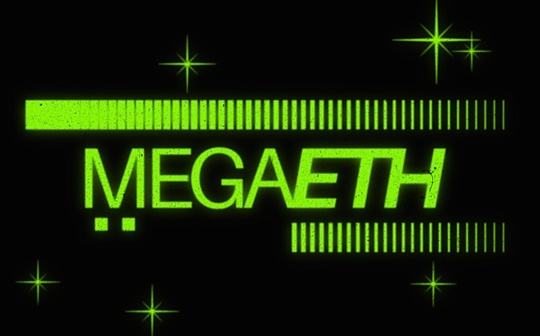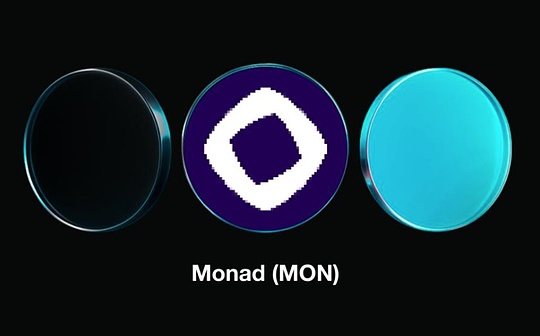
Source:Coinbase Ventures;Compiled by: Bitchain Vision
Every year, the cryptocurrency frontier continues to change.In 2025, we witnessed stablecoin infrastructure reshaping payment methods, cross-chain proofs shortening settlement times that once took days to unprecedented levels, prediction markets breaking through and gaining sustained mainstream applications, and new DEX models realizing a market where “everything can be traded” on the chain.These breakthroughs ushered in a new era for an ambitious team working around the clock to build the next big breakthrough in cryptocurrency.If you compare the current state of cryptocurrencies to the beginning of the year, you will see greater liquidity, improved privacy protections, greater interoperability, and synergies between on-chain infrastructure and artificial intelligence.Regardless of price trends, we remain as confident as ever in the future of cryptocurrencies.
Here are some of our team’s most enthusiastic ideas for 2026, and answers to the question we’re often asked: “What should I build next?”We believe the next breakthrough companies and protocols will emerge in these areas, and we are actively seeking investment.If you are developing in these areas, welcome to communicate with us.You can contact us via X private message.
1. RWA Perpetual Contract—Everything can be contracted
With renewed interest in on-chain RWA, investors are looking for new ways to invest.As the most mature trading product in the cryptocurrency field, perpetual contracts provide a faster and more flexible investment path than tokenization.Thanks to recent improvements in perpetual contract decentralized exchange (DEX) infrastructure, RWA perpetual contracts create synthetic investment opportunities for off-chain assets through perpetual futures contracts.We believe this field is developing in two directions.First, introduce exotic asset investment opportunities onto the chain: since perpetual contracts do not require the underlying assets to be mortgaged, markets can be formed for almost any asset, thereby achieving the “perpetualization” of various assets from private companies to economic data.Second, as cryptocurrencies become increasingly connected to macro markets, a more sophisticated group of traders wish to express views that are no longer limited to long digital assets.This has created demand for on-chain macro asset investment opportunities, allowing traders to hedge or take positions through instruments tied to oil, inflation breakeven points, credit spreads and volatility.——Kinji Steimetz
2. Professional exchanges and trading terminals
Alternative Prop AMM
The rise of perpetual decentralized exchanges (DEXs), application-specific chains, and rollups highlights the importance of market structure design in building sustainable exchanges, especially in protecting market makers from malicious traders.While these new environments can embed such protection mechanisms at the underlying level, replicating similar structures on a general-purpose chain without major protocol upgrades remains difficult.We are increasingly focusing on projects that can accelerate the development of on-chain market structures within these broader ecosystems.Prop-AMM on Solana is an emerging model where idle liquidity can only be executed through aggregators, thereby shielding liquidity providers (LPs) from predatory transaction flows.This prop-driven approach can significantly advance market structure innovation ahead of underlying improvements, and has potential applications beyond the Solana spot market.——Kinj Steimetz
Prediction market trading terminal
Prediction markets have become one of the leading consumer cryptocurrency applications, successfully crossing the chasm into mainstream adoption.However, today’s prediction markets also face the same fragmentation issues as early DeFi.For example, users must switch between multiple interfaces that offer limited tools and liquidity pools that are siled from each other.The emergence of prediction market aggregators has the potential to become a mainstream interface layer, integrating over $600 million in decentralized liquidity and providing a unified view of real-time event odds across platforms.Imagine a trading terminal (similar to Axiom’s UX, but for event contracts) equipped with professional tools such as advanced order types, filters/charts, multi-platform routing and position tracking, cross-platform arbitrage insights, and more.——Jonathan King
3. Next generation DeFi
Perpetual contract market composability
Perpetual futures are evolving from siled trading venues into composable decentralized finance (DeFi) markets, opening up new areas of capital efficiency.Major perpetual futures exchanges such as Hyperliquid and Lighter are taking the lead in integrating with lending protocols, allowing users to earn returns on collateral while maintaining leveraged positions.With trading volume on perpetual futures decentralized exchanges (DEXs) reaching $1.4 trillion per month and growing 300% year-over-year by 2026, protocols are likely to further expand the use of perpetual futures, allowing traders to simultaneously hedge, earn yield, and use leverage without sacrificing liquidity.——Ethan Oak
Unsecured Loan/Credit
The unsecured credit money market is the next frontier of DeFi, and a breakthrough model may emerge in 2026 that combines on-chain reputation with off-chain data to unleash the potential of unsecured lending on a large scale.The market opportunity is huge: the U.S. alone has $1.3 trillion in revolving unsecured credit lines, from which cryptocurrencies stand to profit due to their superior capital efficiency and global accessibility.For builders in the field, the challenge is to design scalable sustainable risk models.If successful, DeFi will truly become a financial infrastructure that can surpass the traditional banking system.——Jonathan King
On-chain privacy
Blockchain is known for its transparency, but unless users can maintain their privacy, mainstream adoption may not be possible.Institutional and professional retail traders are unable to trade if they constantly leak trading strategies to competitors, and ordinary users generally do not want to have their entire financial records exposed on the chain.We see developers working on privacy-preserving assets (e.g. Zcash) and DeFi applications (e.g. private order books, lending, etc.), as well as dedicated payments blockchains that make privacy a raison d’être.Whether these tools are built on top of private privacy networks or layered on top of existing public blockchains using advanced cryptography techniques (such as zero-knowledge proofs, fully homomorphic encryption, multi-party computation, end-point encryption, etc.), they enable blockchains to maintain verifiability while reducing user exposure to malicious actors.——Ethan Oak
4. AI and robotics
Robot and humanoid data collection
As artificial intelligence continues to advance and the market begins to set its sights on the next technological frontier, there is growing consensus that robotics could define the next phase of innovation.While many teams are working in this direction, a critical gap remains in training robots and embodied AI systems: available data sets remain limited and fragmented.One of the major scarce areas is fine-grained physical interaction data, such as grasping, pressure, or multi-object manipulation involving cloth, cables, and other deformable materials.While this challenge is not limited to the cryptocurrency space, incentivized data collection models similar to decentralized physical infrastructure networks such as DePIN could provide a feasible framework for scaling the collection of high-quality physical interaction data, thereby accelerating the development and deployment of advanced robotic systems.——Kinj Steimetz
Proof of humanity
We are approaching a tipping point where everything you see on connected digital screens will be indistinguishable from human source to AI-generated.We believe that the combination of biometrics, cryptographic signatures, and open source developer standards is critical to building a “proof of humanity” solution that can complement artificial intelligence in new models of human-computer interaction.Worldcoin (our portfolio company) has been ahead of the curve, anticipating and working to solve this problem.We are happy to support multiple solutions to address this increasingly complex challenge.——Hoolie Tejwani
On-chain development and secure artificial intelligence
Smart contract development is about to have its “GitHub Copilot moment.”In 2026, artificial intelligence agents may further popularize on-chain construction: non-technical founders can start on-chain businesses in hours instead of months, and agents will be responsible for smart contract code generation, security reviews, and continuous monitoring.The opportunity lies in the emergence of agent tools, which will make smart contract development and security/risk management as convenient as modern web page construction, which may trigger an explosive growth of on-chain applications and experiences.——Jonathan King
Looking ahead to 2026, we are encouraged by the many builders taking the plunge and pushing the on-chain economy forward.These ideas reflect the huge potential we see, but the most exciting projects often come from unexpected places.








